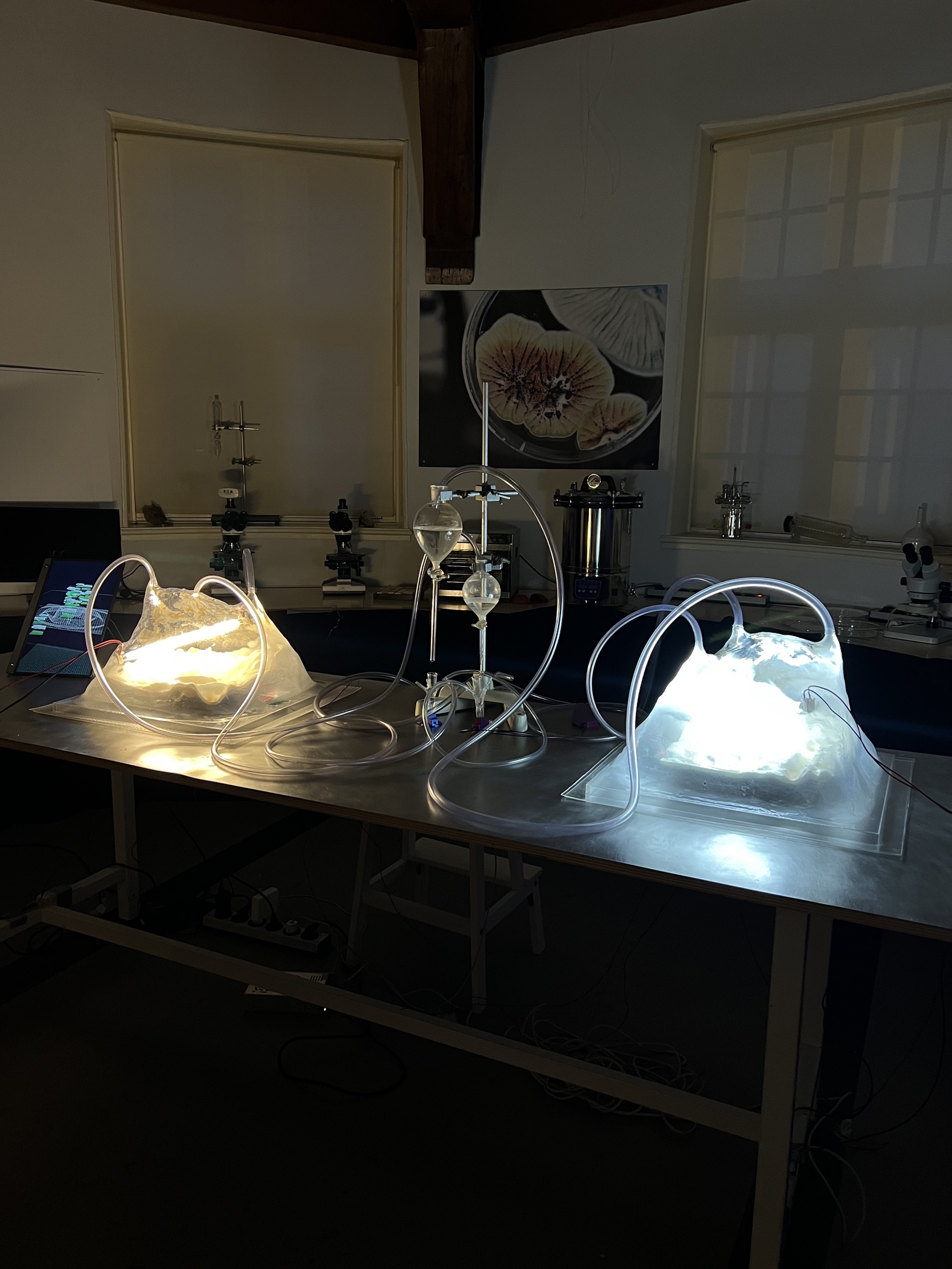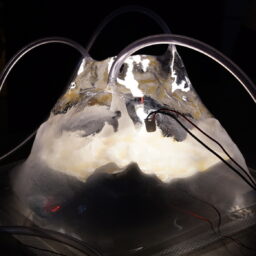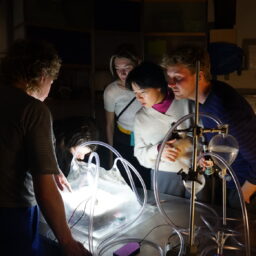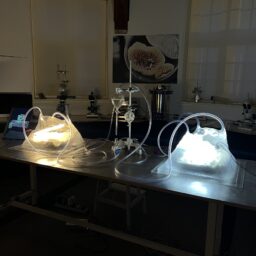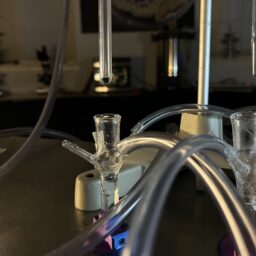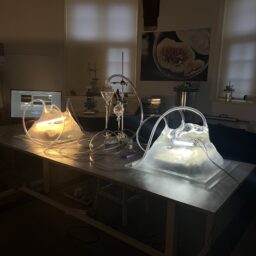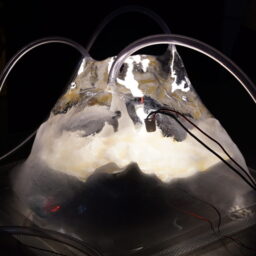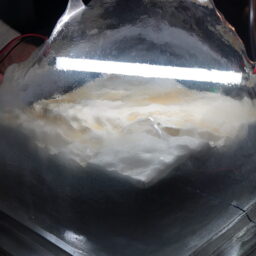Humans are terrible space travellers. The conditions outside of Earth’s atmosphere don’t work well for us in the long run: radiation, extreme temperatures and lack of gravity won’t keep us going. But humans are holobionts: our body is a collection of many different species that depend on and interact with each other. This project prototype imagines a future in which holobiont has taken on a different, more suitable form to realize interplanetary space travel. The human body as we know it no longer exists in this spaceship, but the bacteria that are in our gut, our genitals and our soil have taken over.
Streptomyces Bacillus Subtills LactobacillusThis extremophile and sporulating bacteria that humans brought into space with them for various reasons have developed an intimate and symbiotic relationship with the technology of the spaceship: a microbe-machine care system. The incubators and growth surfaces have taken on organic forms of post-human-lab landscapes and bubbles. Through vibrations and electrical pulses, the micro-organisms and technology can communicate and send each other energy. Bacteria themselves communicate in very high-frequency vibrations (6000rpm) and electrical pulses. Studies show that the low-frequency vibrations of a space ship (20-60rpm) cause an increased bacterial growth rate (NASA/Judson College, 2004).
Just like fungi, certain bacteria will form spores when facing challenging conditions. These spores are resilient against drought, lack of food, lack of oxygen, radiation and extreme temperatures. They are excellent space travellers! There are even hypotheses that the first microbial life might not have formed spontaneously on Earth, but might, in fact, have entered Earth from space on a comet, as pre-human space travellers. The technology on board keeps track of the bacteria population and spore count through a spectrophotometer. During the extremes of long-lasting space travel, the conditions are kept cold and dry for most bacteria to stay in their hibernating spore form.
The spaceship also analyses external surroundings and approaching planets through spectral analysis: a tool that is used in astronomy to define what chemicals are present in stars and in the atmospheres of exoplanets; just as it is used as a tool in microbiology to analyze the amount and type of micro-organisms in a suspension. When external conditions are favourable, a technological chain reaction is set in motion to activate higher temperatures, humidity and food, so the bacterial spores can be awakened to curiously explore and interact with new surroundings.
Final project Biohack Academy 2023
